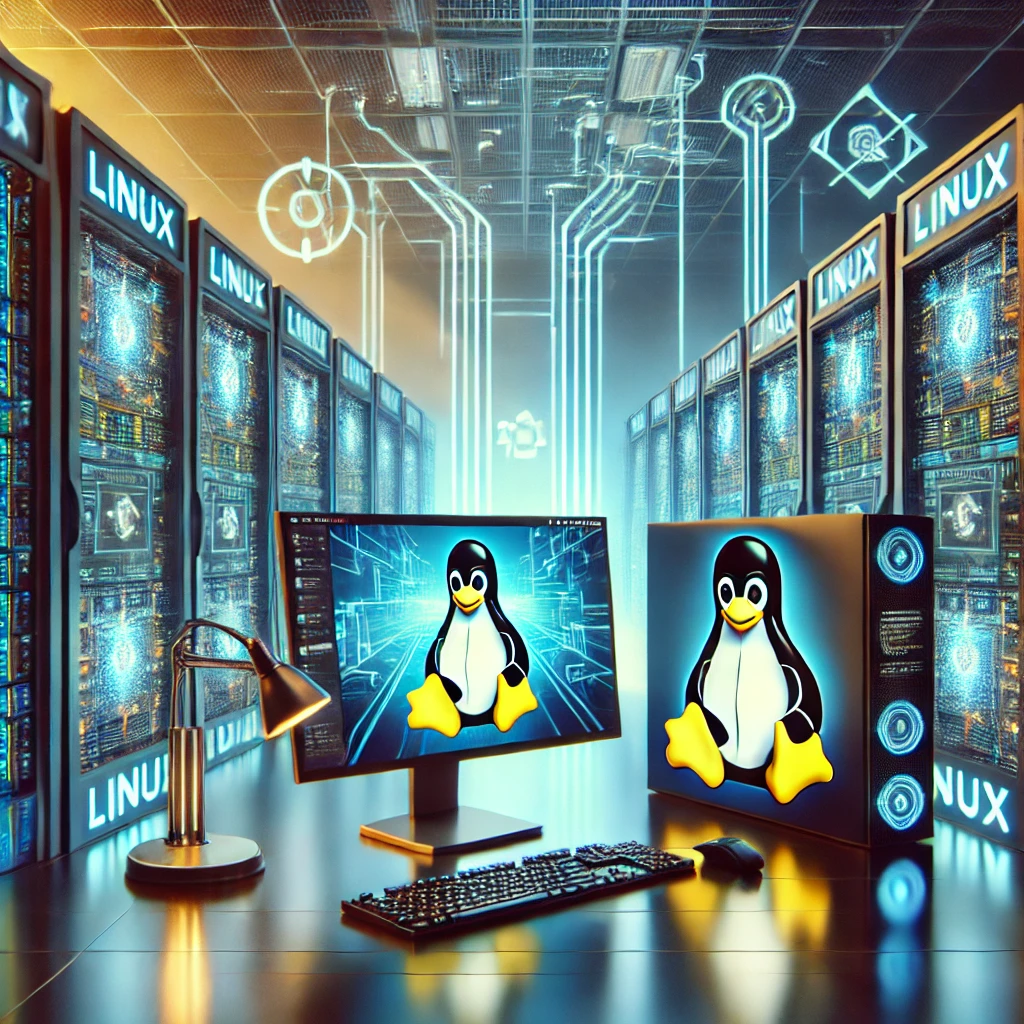
What Will 2025 Bring for Linux Operating Systems?
The Linux operating system has continually evolved from a niche platform for tech enthusiasts into a critical pillar of modern technology. As the backbone of everything from servers and supercomputers to mobile devices and embedded systems, Linux drives innovation across industries. Looking ahead to 2025, several key developments and trends are set to shape its future.
Linux in Cloud and Edge Computing
As the foundation of cloud infrastructure, Linux distributions such as Ubuntu Server, CentOS Stream, and Debian are integral to cloud-native environments. In 2025, advancements in container orchestration and microservices will further optimize Linux for the cloud. Additionally, edge computing, spurred by IoT and 5G, will rely heavily on lightweight Linux distributions tailored for constrained hardware. These distributions are designed to provide efficient operation in environments with limited resources, ensuring smooth integration of devices and systems at the network's edge.
Strengthening Security Frameworks
With cyber threats growing in complexity, Linux distributions will focus on enhancing security. Tools like SELinux, AppArmor, and eBPF will see tighter integration. SELinux and AppArmor provide mandatory access control, significantly reducing the risk of unauthorized system access. Meanwhile, eBPF, a technology for running sandboxed programs in the kernel, will enable advanced monitoring and performance optimization. Automated vulnerability detection, rapid patching, and robust supply chain security mechanisms will also become key priorities, ensuring Linux's resilience against evolving attacks.
Integrating AI and Machine Learning
Linux's role in AI development will expand as industries increasingly adopt machine learning technologies. Distributions optimized for AI workloads, such as Ubuntu with GPU acceleration, will lead the charge. Kernel-level optimizations ensure better performance for data processing tasks, while tools like TensorFlow and PyTorch will be enhanced with more seamless integration into Linux environments. These improvements will make AI and ML deployments faster and more efficient, whether on-premises or in the cloud.
Wayland and GUI Enhancements
Wayland continues to gain traction as the default display protocol, promising smoother transitions from X11. This shift reduces latency and improves rendering, offering a better user experience for developers and gamers alike. Improvements in gaming and professional application support, coupled with enhancements to desktop environments like GNOME, KDE Plasma, and XFCE, will deliver a refined and user-friendly interface. These developments aim to make Linux an even more viable choice for everyday users.
Immutable Distributions and System Stability
Immutable Linux distributions such as Fedora Silverblue and openSUSE MicroOS are rising in popularity. By employing read-only root filesystems, these distributions enhance stability and simplify rollback processes. This approach aligns with trends in containerization and declarative system management, enabling users to maintain consistent system states. Immutable systems are particularly beneficial for developers and administrators who prioritize security and system integrity.
Advancing Linux Gaming
With initiatives like Valve's Proton and increasing native Linux game development, gaming on Linux is set to grow. Compatibility improvements in Proton allow users to play Windows games seamlessly on Linux. Additionally, hardware manufacturers are offering better driver support, making gaming on Linux an increasingly appealing choice for enthusiasts. The Steam Deck's success underscores the potential of Linux in the gaming market, encouraging more developers to consider Linux as a primary platform.
Developer-Centric Innovations
Long favored by developers, Linux will see continued enhancements in tools, containerization, and virtualization. For instance, Docker and Podman will likely introduce more features tailored to developer needs. CI/CD pipelines will integrate more seamlessly with Linux-based workflows, streamlining software development and deployment. Enhanced support for programming languages and frameworks ensures that developers can work efficiently across diverse projects.
Sustainability and Energy Efficiency
As environmental concerns drive the tech industry, Linux will lead efforts in green computing. Power-saving optimizations, such as improved CPU scaling and kernel-level energy management, will reduce energy consumption without compromising performance. Community-driven solutions, supported by the open-source nature of Linux, will focus on creating systems that are both powerful and environmentally friendly.
Expanding Accessibility and Inclusivity
The Linux community is set to make the operating system more accessible to a broader audience. Improvements in assistive technologies, such as screen readers and voice navigation tools, will empower users with disabilities. Simplified interfaces, better multi-language support, and comprehensive documentation will make Linux easier to use for newcomers and non-technical users.
Highlights from Key Distributions
Debian Debian's regular two-year release cycle ensures a steady stream of updates, with version 13 (“Trixie”) expected in 2025, following the 2023 release of “Bookworm.” Debian 13 will retain support for 32-bit processors but drop very old i386 CPUs in favor of i686 or newer. This shift reflects the aging of these processors, which date back over 25 years. Supporting modern hardware allows Debian to maintain its reputation for stability and reliability. As a foundational distribution, Debian's updates ripple across numerous derivatives, including Antix, MX Linux, and Tails, ensuring widespread impact in the Linux ecosystem.
Ubuntu Support for Ubuntu 20.04 ends in April 2025, unless users opt for the Extended Security Maintenance (ESM) via Ubuntu Pro. This means systems running this version will no longer receive security updates, potentially leaving them vulnerable to threats. Upgrading to Ubuntu 24.04 LTS is recommended for server systems to ensure continued support and improved features, such as better hardware compatibility and performance optimizations.
openSUSE OpenSUSE Leap 16 will adopt an “immutable” Linux architecture, focusing on a write-protected base system for enhanced security and stability. Software delivery via isolated containers, such as Flatpaks, will align the distribution with cloud and automated management trends. While this model enhances security, it may limit flexibility for desktop users who prefer customizable systems. Nevertheless, openSUSE's focus on enterprise and cloud environments ensures it remains a leader in innovation for automated and secure Linux systems.
Nix-OS Nix-OS introduces a unique concept of declarative configuration, enabling precise system reproduction and rollback capabilities. By isolating dependencies akin to container formats, Nix-OS minimizes conflicts and ensures consistent system behavior. This approach is invaluable for cloud providers and desktop users alike. The ability to roll back to previous states effortlessly provides added security and convenience, especially for administrators managing complex environments.
What does this mean?
In 2025, Linux will continue to grow, adapt, and innovate. From powering cloud infrastructure and advancing AI to providing secure and stable desktop experiences, Linux remains an indispensable part of the tech ecosystem. The year ahead promises exciting developments that will reinforce its position as a leader in the operating system landscape. With a vibrant community and industry backing, Linux will continue shaping the future of technology for years to come.

Recommended Comments